Currently recruiting MSc. and PhD. students (for 2024/25). contact: LASSEN@triumf.ca
Currently recruiting a post doctoral resaerch associate to work with TRILIS & polarizer development
The TRIUMF Resonant Ionization Laser Ion Source is the first RILIS to use all solid state lasers on-line for radioactive ion beam delivery. It operates tuneable, pulsed titanium:sapphire (TiSa) lasers, pumped by a frequency-doubled, diode pumped Nd:YAG laser. This laser light can also be frequency doubled, tripled and quadrupled with few percent tripling and quadrupling efficiency. The Ti:Sa laser parameters are:
rep. rate: 10 kHz, pulse length: 40 ns, tuning range: (670-990)nm and available intracavity frequency doubling & external higher harmonic generation |
optional tracked frequency doubing and frequency summing for in-source sepctroscopy |
isotopes from 40 elements on-line delivered with TiSa lasers (google: "isac yield" for almost up to date yield results and calculated in-target production) |
ion guide - laser ion source (IG-LIS) capability now at both ISAC target stations with improved square wave RF dricver system for the ion guide (2022) | ARIEL laser ion sources & laser dev. lab laser clean room laboratory (2021), laser dev in operation, ALIS electron target laser ion source - funded & under construction |
12W of Nd:YAG laser fundamental wavelength, or 6W of frequency doubled light are available for non-resonant ionization if needed. In 2020 for on-line operation a 10W@532nm laser system has been added to improve non-resonant ionization efficiency.
Long term developments aim at replacing all non-resonant ionization schemes with resonant ionization using auto-ionizing resonances in order to simplify and reduce system cost for RILIS operation.
The TRIUMF RILIS sketch hints at the fact that laser beam transport is integral to the efficient operation of a RILIS. The on-line laser laboratory is located approx. 20 m from the isotope production target-ion source. Since 04/2011 T RILIS can be operated in both the ISAC west and east target stations, thus allowing for full flexibility in beam delivery, since 2022 also for isobar free beams with IG-LIS.
A major advantage for a RILIS source at a RIB facility is that the laser systems are accessible during RIB production in contrast to classical ion sources, which by nature of being closely coupled to the isotope production target become irradiated and must be discarded after use, together with the target. This in comparison makes an on-line RILIS an economic and versatile ion source.
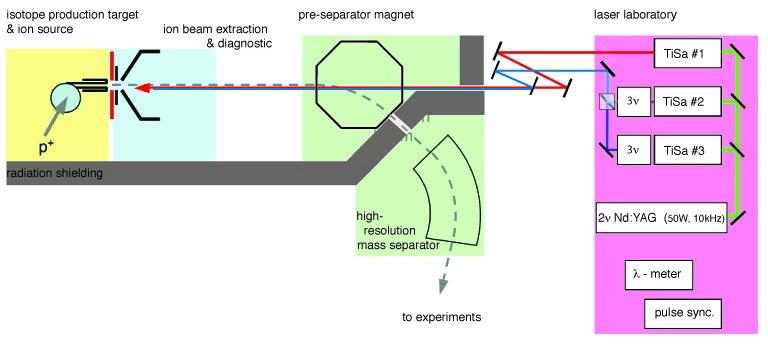 . First TRILIS (2004)
. First TRILIS (2004)
TRILIS (2023)

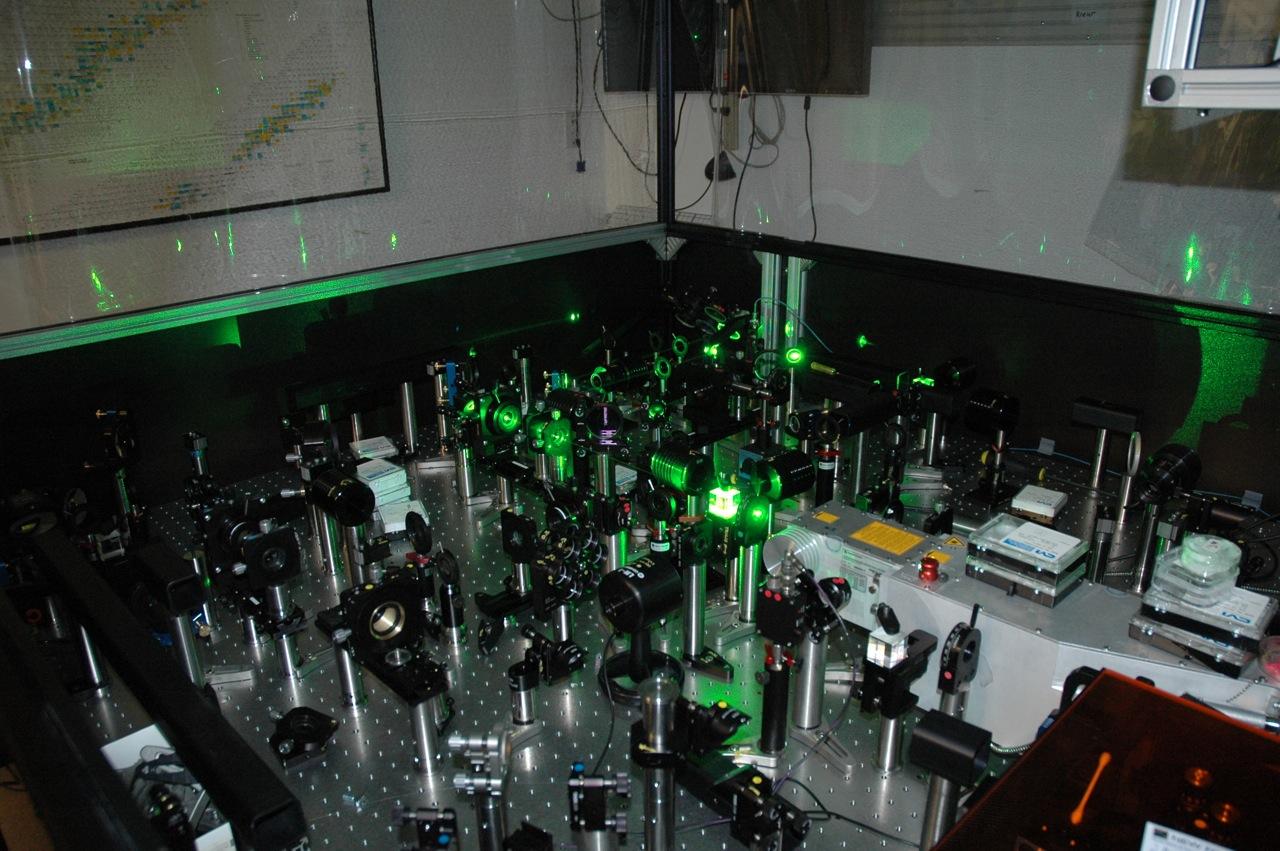 ultra stable TiSa
ultra stable TiSa 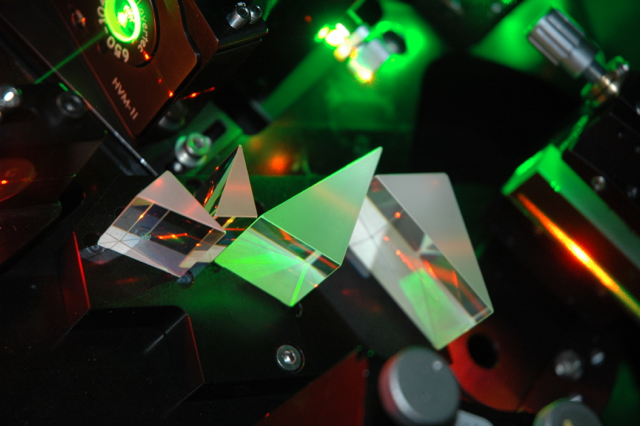 continuously tuneable TiSa
continuously tuneable TiSa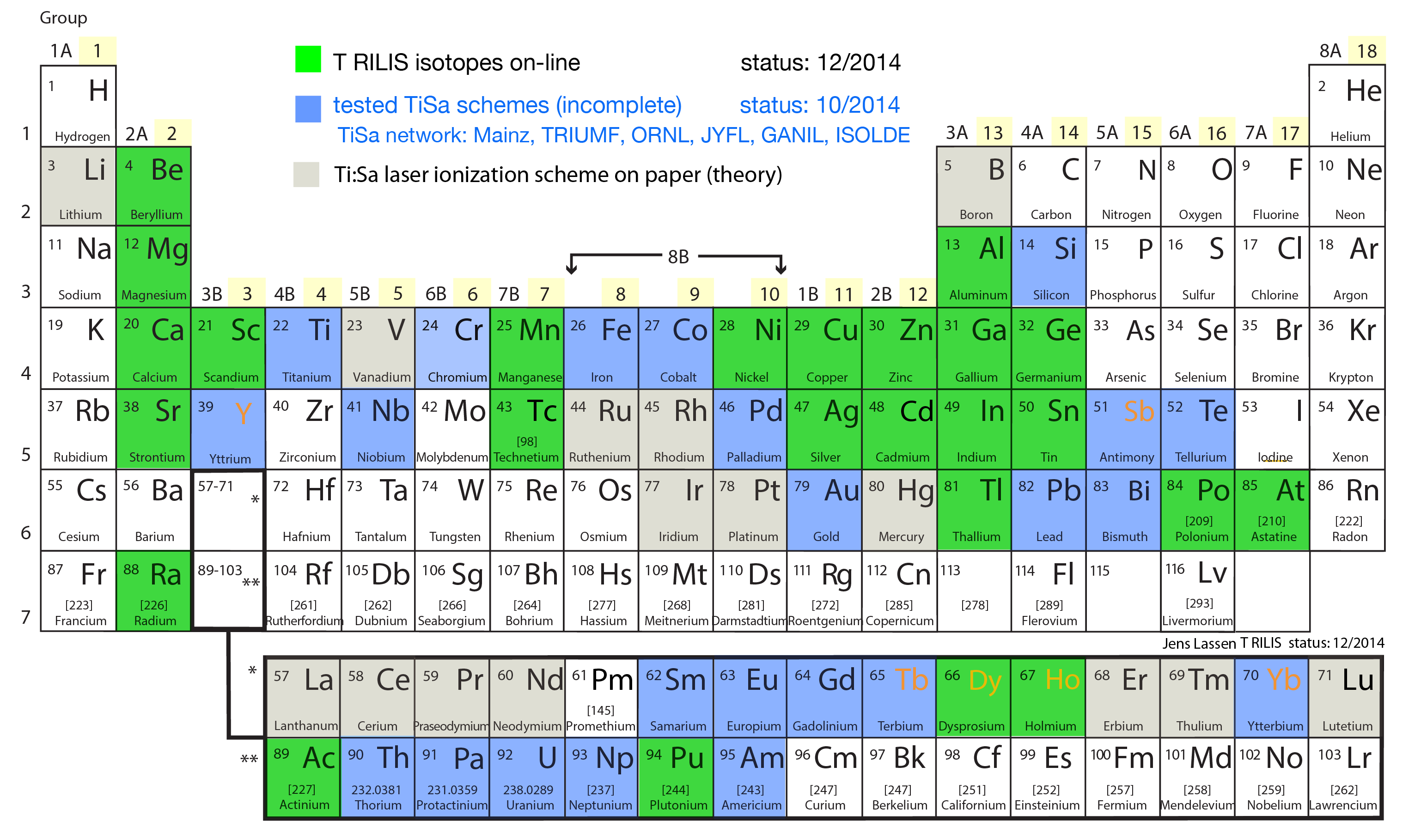 TiSa RILIS elements
TiSa RILIS elements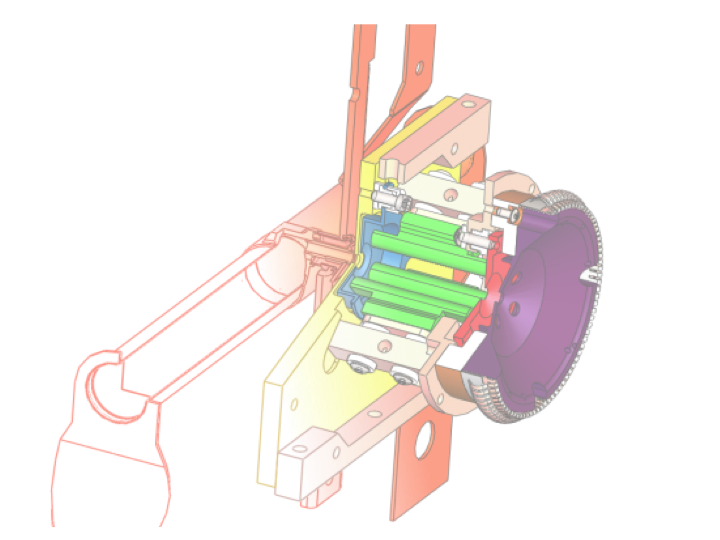 isobar free RILIS:
isobar free RILIS: